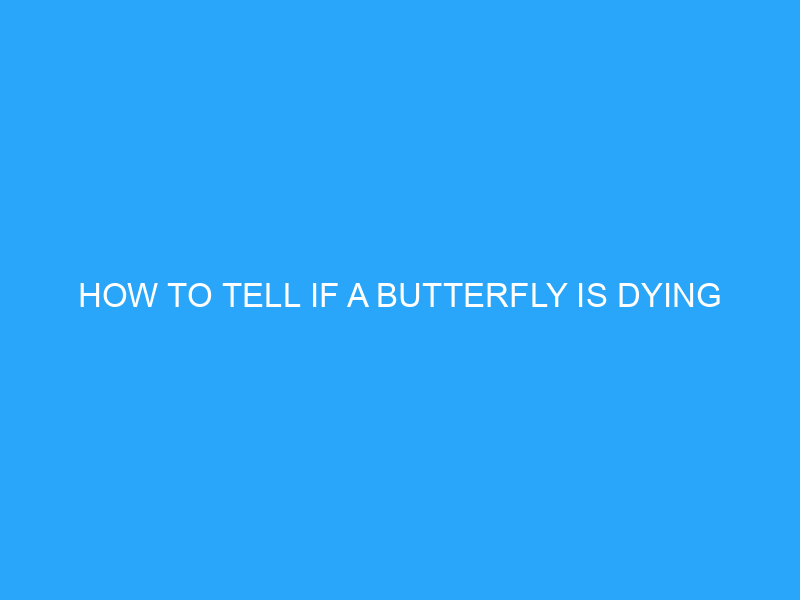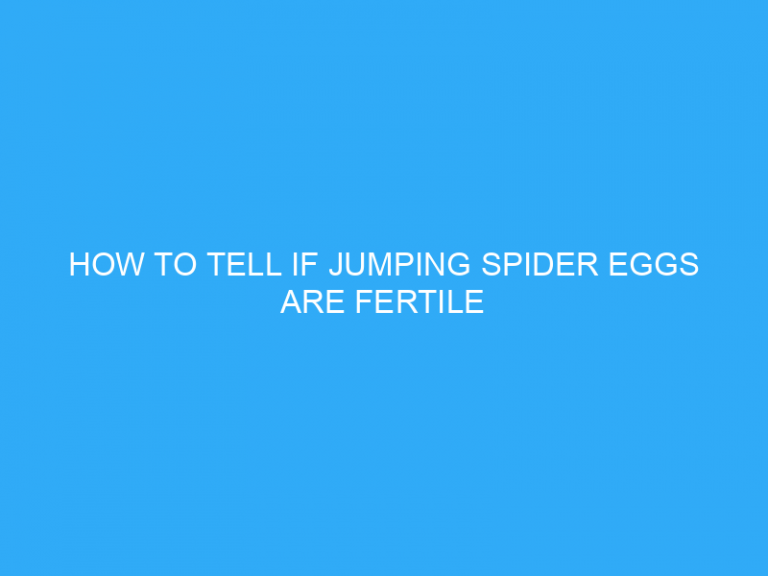How to Tell if a Butterfly is Dying: A Comprehensive Guide
Butterflies are beautiful, delicate creatures that evoke a sense of joy and wonder in many. Watching their graceful flight and fluttering about, it can be easy to forget that they can be vulnerable to disease, predators, and other dangers. If you see a butterfly that is not moving and appears to be in distress, it may be hard to tell if it is just resting or if it is dying. In this article, we will discuss how to tell if a butterfly is dying, as well as how to help a butterfly in distress.
What Causes a Butterfly to Die?
There are many reasons that a butterfly may die, ranging from natural causes to human interference. Natural causes of death in butterflies include disease, parasites, predation, and old age. Human interference can cause a butterfly’s death through habitat destruction, pesticide use, and climate change.
Signs that a Butterfly is Dying
When a butterfly is dying, there are certain signs to look for that can help you determine if the butterfly is in distress. Here are some of the signs you should look for when trying to determine if a butterfly is dying:
1. Weak or Erratic Flight – If a butterfly’s flight appears weak or erratic, this could be an indication that the butterfly is in distress.
2. Unresponsive to Touch – Butterflies that are dying will often be unresponsive to touch, as they may not have the strength to move or fly away.
3. Slow or No Movement – If a butterfly appears to be slow or not moving at all, this could be a sign that the butterfly is in distress.
4. Discolored Wings – Discolored wings can be an indicator that a butterfly is not healthy.
5. Unusual Posture – An unusual posture, such as lying on its back, could be a sign that a butterfly is dying.
Frequently Asked Questions about How to Tell if a Butterfly is Dying
Q1. How can I tell if a butterfly is dying?
A1. To tell if a butterfly is dying, look for signs such as weak or erratic flight, unresponsiveness to touch, slow or no movement, discolored wings, and unusual posture.
Q2. What causes a butterfly to die?
A2. The causes of death in butterflies can range from natural causes such as disease, parasites, predation, and old age, to human interference such as habitat destruction, pesticide use, and climate change.
Q3. Can a butterfly be saved if it is dying?
A3. It is possible to save a butterfly if it is dying, depending on the cause of its distress. If the butterfly is suffering from dehydration, you can attempt to rehydrate it by placing a damp paper towel near the butterfly. If the butterfly is suffering from an injury, you can attempt to heal it by applying a small amount of honey or sugar to the wound.
Q4. How can I help a butterfly that is in distress?
A4. If you find a butterfly in distress, the best thing you can do is to gently move the butterfly to a safe, sheltered location with plenty of nectar. You can also attempt to help the butterfly by rehydrating it with a damp paper towel or healing an injury with a small amount of honey or sugar.
Q5. Can a butterfly come back to life after it appears to be dead?
A5. In some cases, a butterfly may appear to be dead but can be revived if it is simply in a state of hibernation or shock. If you find a butterfly that appears to be dead, you can attempt to revive it by gently warming it in your hands and providing a drop of honey or sugar water.
Conclusion
If you see a butterfly that is not moving and appears to be in distress, it can be difficult to tell if it is just resting or if it is dying. To tell if a butterfly is dying, look for signs such as weak or erratic flight, unresponsiveness to touch, slow or no movement, discolored wings, and unusual posture. If the butterfly is in distress, it is possible to save it by rehydrating it or healing an injury. It is also possible for a butterfly to come back to life after it appears to be dead, so it is important to check to make sure the butterfly is truly dead before giving up hope.






